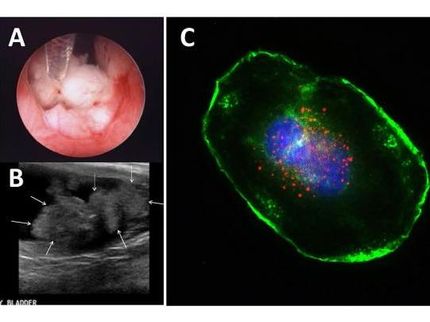Suitcase-sized detector can ID anthrax in one hour
A portable device can detect the presence of the anthrax bacterium in about one hour from a sample containing as few as 40 microscopic spores, report Cornell and University of Albany researchers who invented it. The device could provide early detection in the case of an anthrax attack, saving many lives.
The basic design, which is small enough to fit in the overhead compartment of an airplane, potentially could be tailored to detect countless other pathogens, such as salmonella, or be used in the field for DNA forensics.
"It was built with the notion of being portable," said Carl Batt, Liberty Hyde Bailey Professor in the Department of Food Science at Cornell and a co-author of the paper published in the International Journal of Biomedical Nanoscience and Nanotechnology. Nathaniel Cady, Ph.D. '06, a nanoscale engineer at the University of Albany, is the paper's lead author.
Seven years in the making, the detector requires that a sample be inserted into the device. From there the machine automatically recovers cells, collects and purifies DNA and then conducts real-time polymerase chain reactions (PCR) to identify if anthrax is present. PCR can amplify extremely small amounts of DNA and is a well-established platform for rapidly detecting biological material.
The researchers began by acquiring what amounts to a small suitcase-sized plastic box with the notion that, "whatever we do, it has to fit in here. It was a line in the sand, an engineering challenge where everything had to fit in the box," Batt said.
The shape of a heavily reinforced suitcase, the device is complete with pumps, heating and cooling elements, and optical and computational circuitry.
By tailoring different assays to the portable real-time PCR platform, the device could be used for a variety of applications in addition to anthrax detection, such as at a crime scene for forensics. For example, if detectives were to find a sample they believe belongs to a perpetrator, they might use such a device to rapidly and broadly determine the gender or eye color of the suspect.
The researchers are currently working to develop new strategies for pumping fluids in the device, a system that now occupies the majority of the space and most of the power. Novel pumping systems based on silicon processing are being created, which could allow engineers to fabricate most of the components of the system on a single chip.
The research was funded by KRAFT foods, the U. S. Department of Agriculture, National Institute of Justice and Food and Drug Administration.
Most read news
Other news from the department science

Get the life science industry in your inbox
By submitting this form you agree that LUMITOS AG will send you the newsletter(s) selected above by email. Your data will not be passed on to third parties. Your data will be stored and processed in accordance with our data protection regulations. LUMITOS may contact you by email for the purpose of advertising or market and opinion surveys. You can revoke your consent at any time without giving reasons to LUMITOS AG, Ernst-Augustin-Str. 2, 12489 Berlin, Germany or by e-mail at revoke@lumitos.com with effect for the future. In addition, each email contains a link to unsubscribe from the corresponding newsletter.






















































